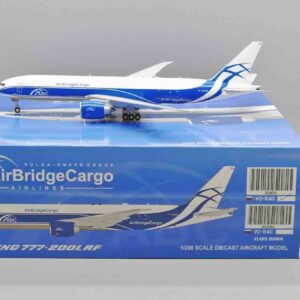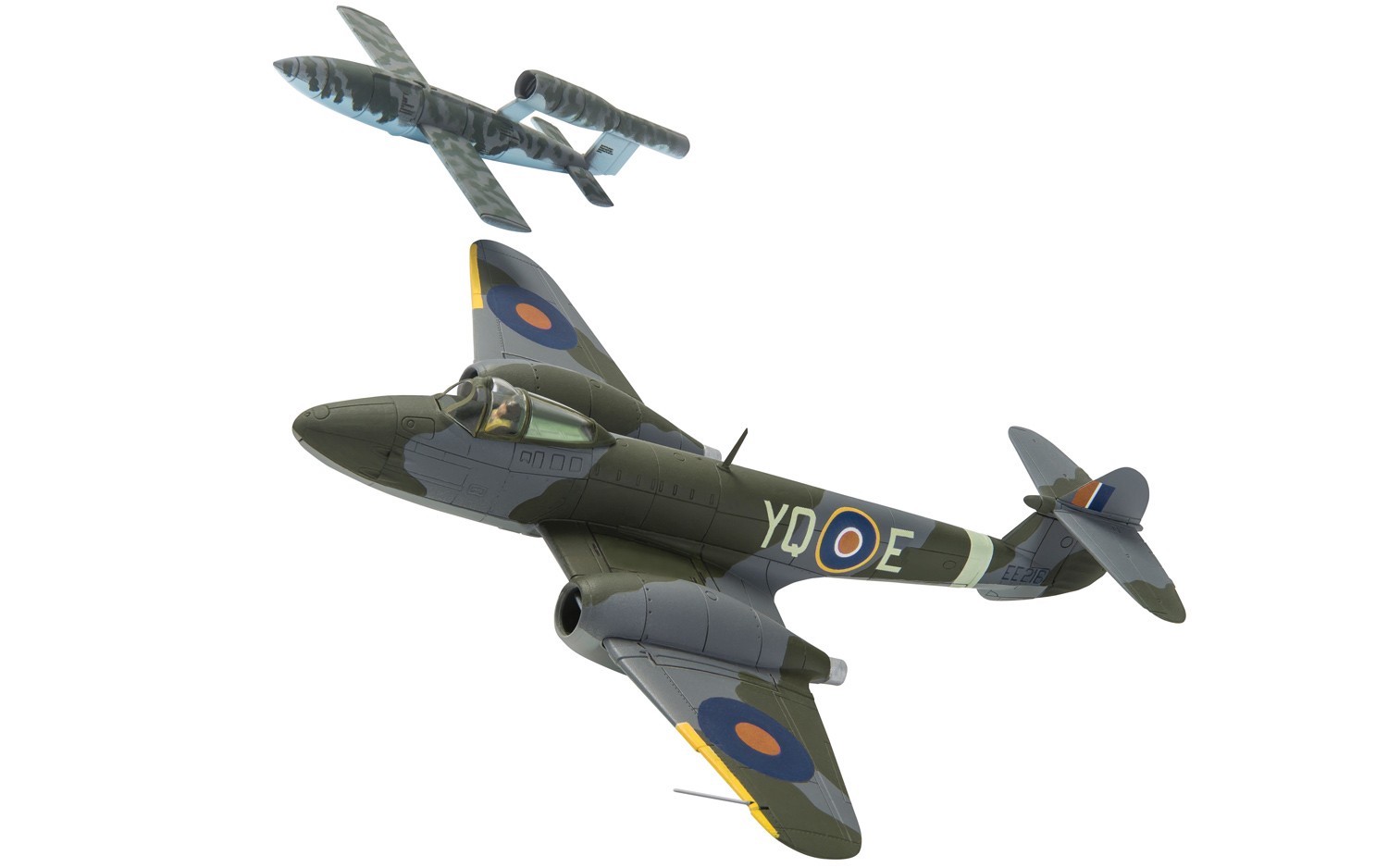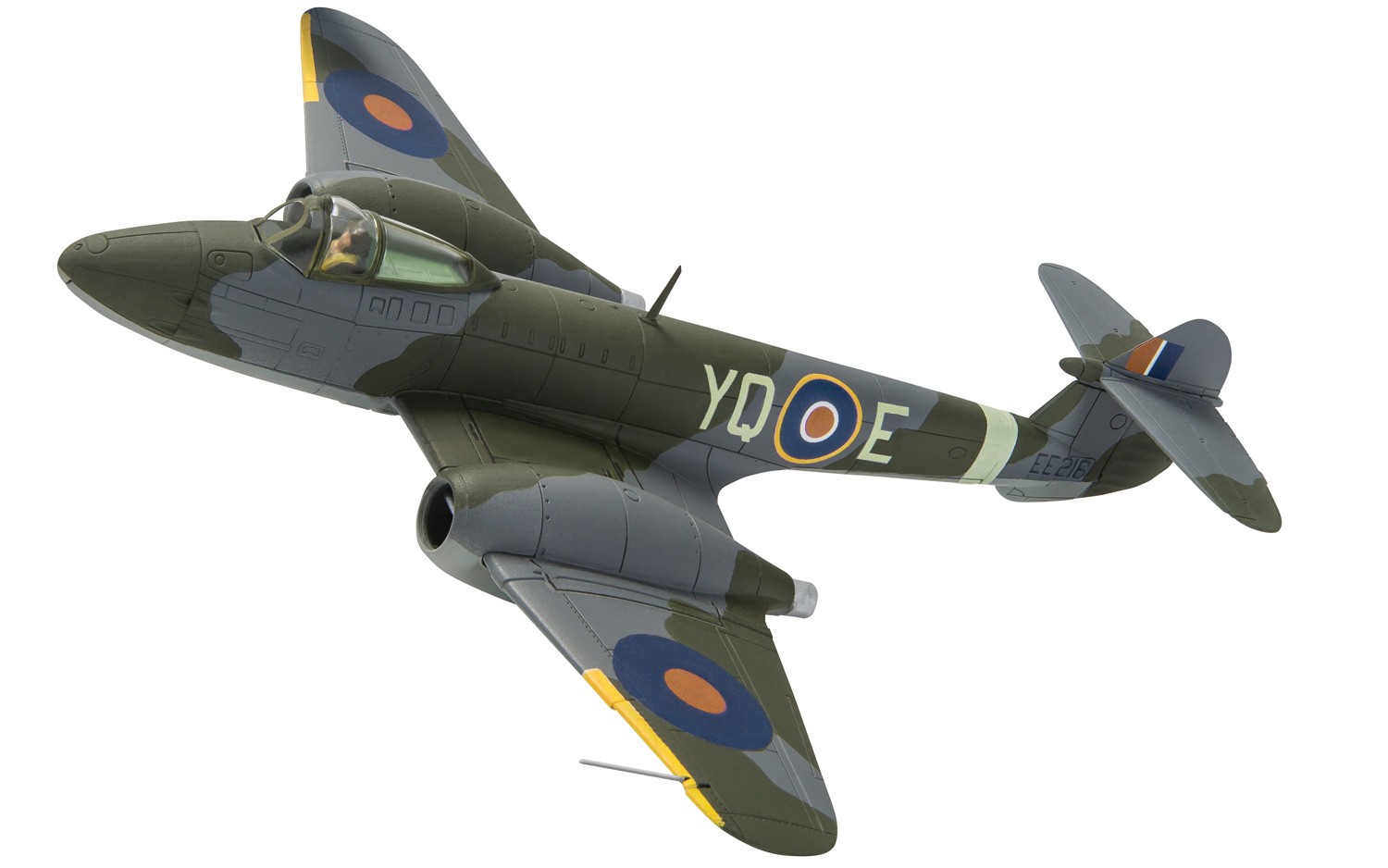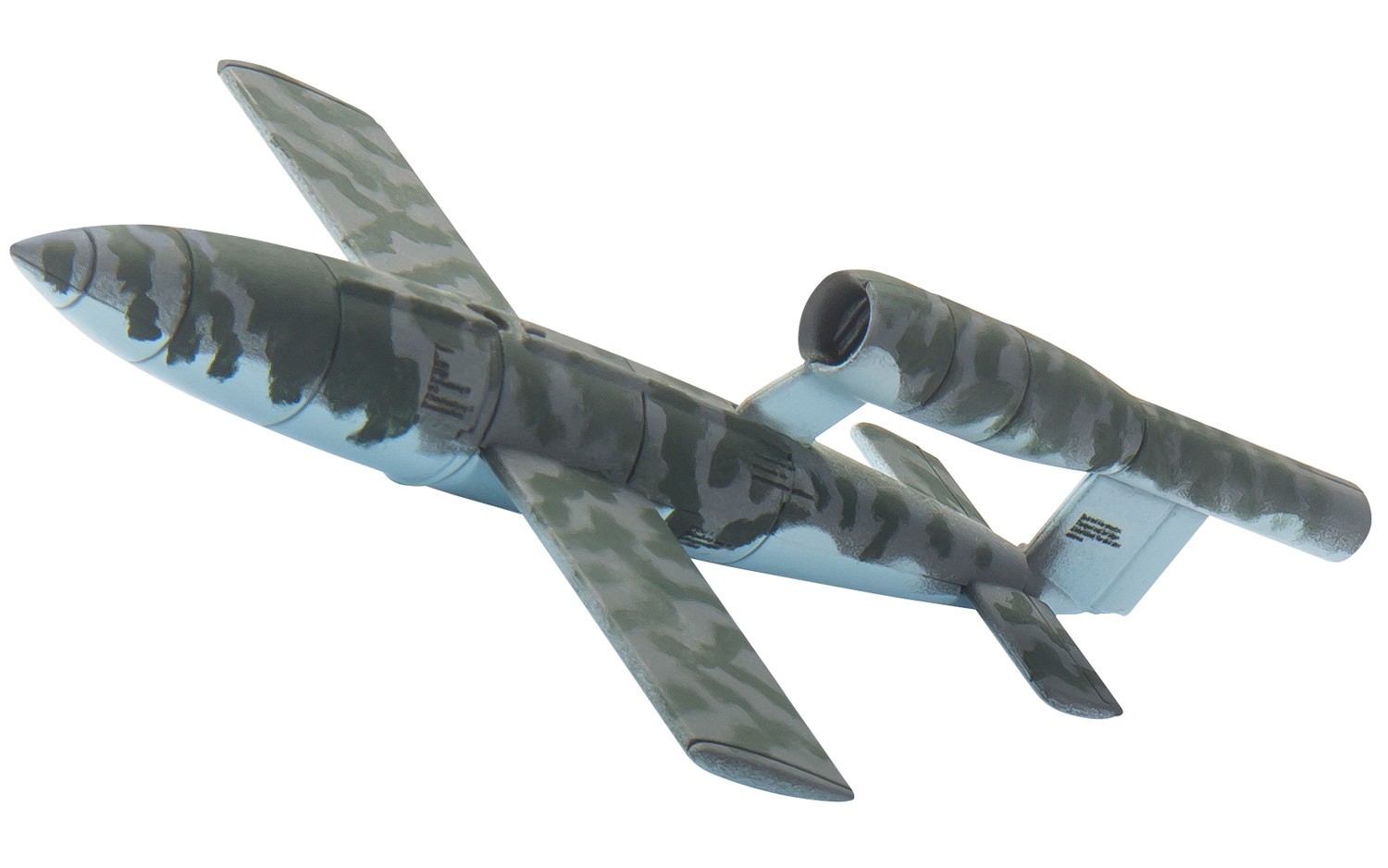Corgi – Gloster Meteor F Mk.3 , ‚YQ-P/EE216′ T.D.’Dixie‘ Dean 616 Sqn.122 Wing RAF + Fieseler Fi 103R Reichenberg „Doodlebug“ Flying Bomb , 1944
3,499 Kč
Skladem
Popis
-sběratelský model letadla Gloster Meteor + V-1.Fieseler Fi 103 Reichenberg 1/72 -provedení: kovový model s plastovými částmi -model je v kvalitním provedení -součástí balení je stojánek
Gloster Meteor
Gloster Meteor byl prvním britským proudovým stíhacím letounem, který sloužil koncem druhé světové války v RAF.
Reichenberg byla pilotovaná verze okřídlené pumy Fieseler Fi 103, známé především pod označením V-1.
The Gloster Meteor was the first British jet fighter and the Allies’ only jet aircraft to achieve combat operations during the Second World War. The Meteor’s development was heavily reliant on its ground-breaking turbojet engines, pioneered by Sir Frank Whittle and his company, Power Jets Ltd. Development of the aircraft began in 1940, although work on the engines had been under way since 1936.
The Fieseler Fi 103R, code-named Reichenberg, was a late-World War II German crewed version of the V-1 flying bomb (more correctly known as the Fieseler Fi 103) produced for attacks in which the pilot was likely to be killed (as actually intended, for use of the Imperial Japanese Naval Air Service’s Ohka rocket-powered kamikaze suicide anti-ship missile) or at best to parachute down at the attack site, which were to be carried out by the „Leonidas Squadron“, V. Gruppe of the Luftwaffe’s Kampfgeschwader 200.
| Určení | proudové stíhací letadlo |
|---|---|
| Výrobce | Gloster Aircraft Company |
| Šéfkonstruktér | George Carter |
| První let | 5. března 1943 |
| Zařazeno | 27. července 1944 |
| Vyřazeno | 80. léta (cvičné cíle) |
| Uživatel | Royal Air Force Armée de l’Air, Izraelské vojenské letectvo, Royal Australian Air Force, Syrské arabské vzdušné síly |
| Výroba | 1943–55 |
| Vyrobeno kusů | 3850 ks |
- Meteor F.1
- First production aircraft built between 1943 and 1944, 20 built.
- Meteor F.1, Trent turboprop
- One-off engine test bed, converted from former No. 616 Squadron RAF operational F.1 serial number EE227, for the Rolls-Royce Trent turboprop engine making it the world’s first turboprop-powered aircraft.The undercarriage was lengthened to give ground clearance for the initial 7 ft 7 inch Rotol airscrews. First flying in September 1945, it was not shown publicly until June 1946. It was found that separate controls for thrust and constant speed units required a lot of skill to manage. It was then flown with higher engine thrust and smaller propellers to enable development of a combined control system.The development programme was complete by 1948.
- Meteor F.2
- Alternative engined version with two Halford H1s – one of the F.9/40s was used as prototype and trials by de Haviland, did not enter production.
- Meteor F.3
- Derwent I powered, with sliding canopy. First flown 11 September 1944, 210 built (first 15 were Welland-powered).
- Meteor F.4
- Derwent 5 powered with strengthened fuselage, 489 built by Gloster and 46 by Armstrong Whitworth for the Royal Air Force. The F.4 was also exported to Argentina (50 aircraft), Belgium (48 aircraft), Denmark (20 aircraft), Egypt (12 aircraft), Netherlands (38 aircraft).
- Meteor FR.5
- One-off fighter reconnaissance version of the F.4. Fitted with vertical cameras in the nose instead of the four cannon and with obliques cameras in the fuselage. Destroyed on maiden flight, 15 June 1949.
- Meteor F.6
- Proposed swept-wing variant of the F.4, not built.
Technické údaje:
- Posádka: 1 muž
- Rozpětí: 13,11 m
- Délka: 12,58 m
- Výška: 3,96 m
- Nosná plocha: 34,74 m²
- Hmotnost vlastního letounu: 4771 kg
- Vzletová hmotnost: 6314 kg
- Pohonná jednotka: 2 × proudový motor Rolls-Royce W.2B/23C
The Royal Air Force (RAF) is the United Kingdom’s aerial warfare force. Formed towards the end of the First World War on 1 April 1918,it is the oldest independent air force in the world. Following victory over the Central Powers in 1918 the RAF emerged as, at the time, the largest air force in the world. Since its formation, the RAF has taken a significant role in British military history. In particular, it played a large part in the Second World War where it fought its most famous campaign, the Battle of Britain.
Mohlo by se Vám líbit…
-
 Corgi1:72
Corgi1:72Corgi – Gloster Meteor F Mk.3 , ‚YQ /616′ 239 Sqn. RAF , Germany 1945
2,499 Kč SklademPřidat do košíku Detail -
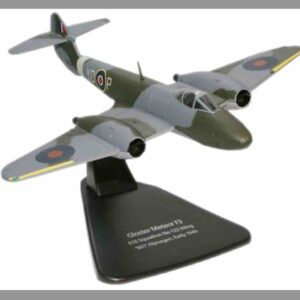 Oxford Diecast1:72
Oxford Diecast1:72Oxford AC031 – Gloster Meteor F Mk.3 , ‚YQ-P/EE274‘ 616 Sqn.122 Wing ‚B91‘ RAF + Fieseler Fi 103R Reichenberg „Doodlebug“ Flying Bomb , Nijmegen Netherlands 1945
1,499 Kč SklademPřidat do košíku Detail

